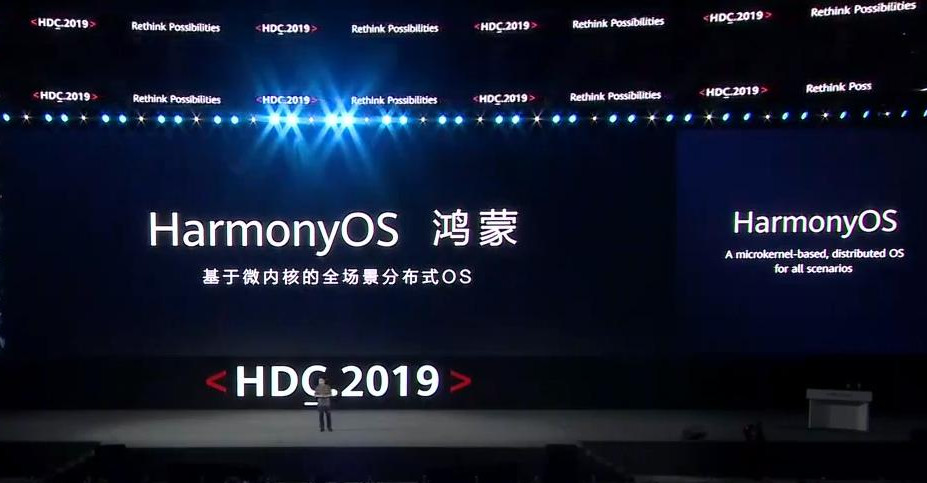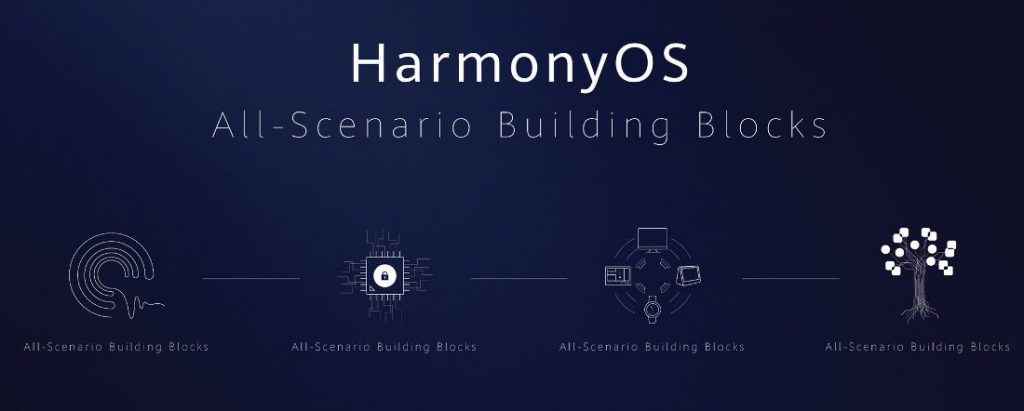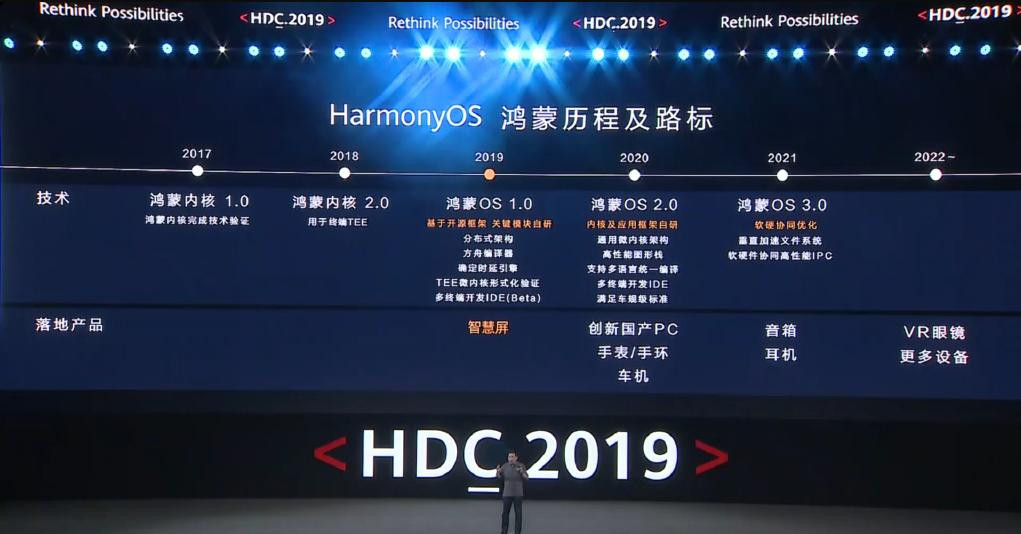
HUAWEI just announced HarmonyOS, the company’s own operating system for smartphones, tablets and smart IoT devices such as smart speakers, computers, smartwatches, wireless earbuds, cars and more. This was announced at the HUAWEI Developer’s Conference (HDC) 2019 in China today.

CEO Richard Yu said that the HarmonyOS is the first microkernel-based distributed OS for all scenarios and was created with four major building blocks in mind, ensuring a new generation OS that is best suited for the digital world today. The HarmonyOS microkernel can be scaled on demand for wider system security. The Microkernel does away with root access to protect system security from the source compared to Android.
HarmonyOS was designed with four distinct technical features to deliver on its promise to consumers.
- Seamless: First-ever device OS with distributed architecture, delivering a seamless experience across devices
By adopting distributed architecture and distributed virtual bus technology, HarmonyOS offers a shared communications platform, distributed data management, distributed task scheduling, and virtual peripherals. With HarmonyOS, app developers won’t have to deal with the underlying technology for distributed apps, allowing them to focus on their own individual service logic. Apps built on HarmonyOS can run on different devices while delivering a seamless, collaborative experience across all scenarios.
- Smooth: Deterministic Latency Engine and high-performance IPC
HarmonyOS will address underperformance challenges with a Deterministic Latency Engine and high-performance Inter Process Communication (IPC). The Deterministic Latency Engine sets task execution priorities and time limits for scheduling in advance. Resources will gravitate toward tasks with higher priorities, reducing the response latency of apps by 25.7%.
- Secure: Microkernel architecture that reshapes security and trustworthiness from the ground up
HarmonyOS uses a brand-new microkernel design that features enhanced security and low latency. This microkernel was designed to simplify kernel functions, implement as many system services as possible in user mode outside the kernel, and add mutual security protection. The microkernel itself provides only the most basic services like thread scheduling and IPC.
Harmony OS’s microkernel design uses formal verification methods to reshape security and trustworthiness from the ground up in a Trusted Execution Environment (TEE). HarmonyOS is the first OS to use formal verification in device TEE, significantly improving security. In addition, because the HarmonyOS microkernel has much less code (roughly one-thousandth the amount of the Linux kernel), the probability of attack is greatly reduced.
- Unified: Multi-device IDE allows apps to be developed once and deployed across multiple devices
Powered by a multi-device IDE, multi-language unified compilation, and a distributed architecture kit, HarmonyOS can automatically adapt to different screen layout controls and interactions, and support both drag-and-drop control and preview-oriented visual programming. This allows developers to more efficiently build apps that run on multiple devices.
The HUAWEI ARK Compiler is the first static compiler that can perform on par with Android’s virtual machine, enabling developers to compile a broad range of advanced languages into machine code in a single, unified environment

HarmonyOS can be nested to adapt flexibly to any device to create a seamless cross-device experience. Developed via the distributed capability kit, it builds the foundation of a shared developer ecosystem. The OS uses HUAWEI ARK Compiler with support for app development in multiple languages (Kotlin, Java, Javascript, C, and C++). The platform will support HTML5, Linux, and Android app compatibility in the future.
The HUAWEI CEO said it will take just a day or two to migrate from Google’s Android to the new HarmonyOS if needed, but it will stick to Google’s platform for now. HUAWEI can switch HarmonyOS anytime if it faces any issues regarding Android in the future.
To encourage broader adoption, HUAWEI will release HarmonyOS as an open-source platform, worldwide. HUAWEI will also establish an open-source foundation and an open-source community to support more in-depth collaboration with developers.
HarmonyOS will bring new benefits to consumers, equipment vendors, and developers. For consumers, it will bring a cohesive and powerful intelligent experience across all aspects of their lives. For equipment vendors, it will help them gain a first-mover advantage in the age of holistic intelligent experience, where 5G, AI, and IoT will see explosive growth. At the same time, HarmonyOS will enable developers to win over more users with less investment, and rapidly innovate services across all scenarios.
HarmonyOS Roadmap
- HarmonyOS 1.0 in 2019 — In-house development for key modules based on open source framework will debut with HONOR Vision Smart TV, which will be launched in China tomorrow, August 10th.
- HarmonyOS 2.0 in 2020 — In-house development for kernel and app framework will support PCs, smartwatches, smart bands and head units.
- HarmonyOS 3.0 in 2021 — Optimization in software-hardware synergy and support speakers and headsets
- HarmonyOS in 2022 — Support VR glasses and other products.
Richard Yu, CEO of Huawei’s Consumer Business Group, regarding the thoughts behind developing this new OS, said:
We’re entering a day and age where people expect a holistic intelligent experience across all devices and scenarios. To support this, we felt it was important to have an operating system with improved cross-platform capabilities. We needed an OS that supports all scenarios, that can be used across a broad range of devices and platforms, and that can meet consumer demand for low latency and strong security.
HarmonyOS is completely different from Android and iOS. It is a microkernel-based, distributed OS that delivers a smooth experience across all scenarios. It has trustworthy and secure architecture, and it supports seamless collaboration across devices. You can develop your apps once, then flexibly deploy them across a range of different devices.
We believe HarmonyOS will revitalize the industry and enrich the ecosystem. Our goal is to bring people a truly engaging and diverse experience. We want to invite developers from around the world to join us as we build out this new ecosystem. Together, we will deliver an intelligent experience for consumers in all scenarios.
